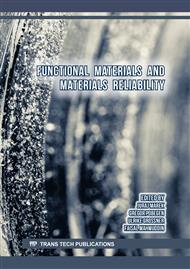p.3
p.13
p.19
p.27
p.35
p.45
p.57
p.75
Improving Fiber-Matrix Compatibility by Surface Modification of Coconut Coir Fiber Using White Rot Fungi
Abstract:
Compatibility between elements in natural fiber based-composite always becomes a hot issue. The presence of lignin in natural fibers inhibits interlock with its matrix. This research investigates the degradation of lignin encapsulating coconut coir fiber using white-rot fungus (Pleurotus Ostreatus) and its effect on composite compatibility. The process of delignification was carried out by exposing coconut coir fibers in the media where the white-rot fungus was incubated and grown. The period of exposure was 10, 20, and 30 days, and the ratio of coconut coir fiber to white-rot fungi were 1:1, 1:1.5, and 1.5:1 (by weight). To find the effect of delignification, several tests were conducted namely lignin content, fiber surface morphology, wettability, and pull-out tensile test. The results show that there is a reduction in the lignin content of the fibers. The largest reduction is 27.11% for 30 days of exposure times with the ratio of 1:1.5. The surface morphology of the fibers is smoother due to the loss of lignin. In the wettability test, it is found a decrease in the contact angle between the fibers and the resin. In line with that, the pull-out tensile test reveals a double increase in the IFSS value reaching 115.54%. This significant improvement might be due to the interlocking ability contributed by surface modification of the fibers. Since this chemical-free treatment promotes good composite compatibility, it might be introduced as an environmentally friendly treatment in the production of natural fiber based-composites
Info:
Periodical:
Pages:
19-25
Citation:
Online since:
June 2023
Keywords:
Price:
Сopyright:
© 2023 Trans Tech Publications Ltd. All Rights Reserved
Share:
Citation:



